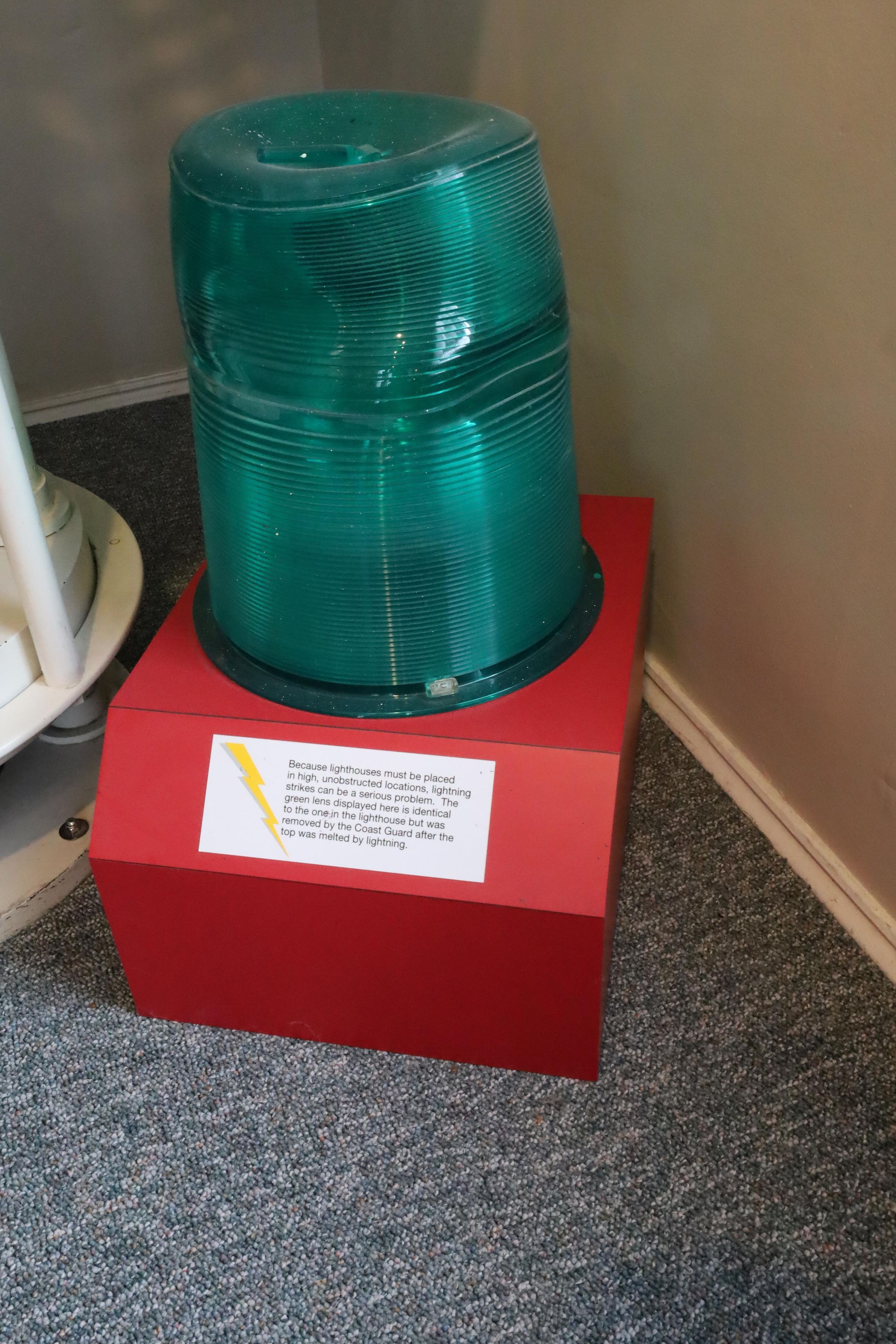Name/Title
Lighthouse Green LensEntry/Object ID
2022.2.104.09Description
This green plastic lighthouse lens is identical to the one in the Marblehead Lighthouse. However, the Coast Guard removed this lens after the top was struck by lightning and melted. Because lighthouses must be placed in high, unobstructed locations, lightning strikes can be a severe problem that can damage the lens.
Marblehead's original lamps consisted of 13 whale oil-burning lanterns with 15" polished brass reflectors behind the wicks that were all aimed in slightly different directions to cover the 200+ degrees that the light needed to be visible on the lake. This required about 18 gallons of whale oil each night, weighing about 80 pounds. The lanterns needed to be refueled every 4 hours.
In 1858 the lanterns were replaced by a 4th order Fresnel lens about 18" in diameter and 29" high with a single kerosene lamp at the center, making the light appear brighter than the lamp and visible 360 degrees around the compass.
After the lighthouse was raised 15 feet between 1898 and 1900, to make it visible further out on the lake, a new 3-1/2 order clamshell design Fresnel lens was installed in 1904. This green plastic lens replaced the large 3-1/2 order lens in the early 1960s. The green color was chosen to eliminate confusion from lights at Cedar Point, Sandusky, and the aviation beacon at Griffing Field and was used until 2013, when the Coast Guard changed it to a modern LED light.
The current lighthouse lens is a stack of 5 ten-watt arrays, and the plastic faces have a Fresnel lens molded into them that provides a tight beam at the horizon.Location
Building
The Keeper's House MuseumOhio State Park
Marblehead Lighthouse State Park
